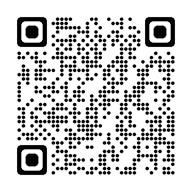Resources
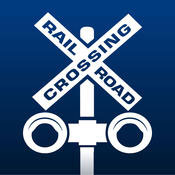
FRA Railroad Crossing Locator
The Crossing Locator was developed by the Federal Railroad Administration to provide users with access to the highway-rail grade crossing database and map features from a mobile device. The tool allows users to locate crossings by USDOT Crossing ID, address or geo-location; access inventory records submitted by states and railroads; and view accident history. Users can also select from multiple base map features and identify railroad crossings by special characteristics.
The information accessed in the mobile application is derived from the Safety Data website using information submitted by States and Railroads. While this is an effective tool, please use the ENS information and contact number during an emergency situation. The Crossing Locator App is currently available for Apple and Android Devices.
More information on the mobile application can be found at:
http://www.fra.dot.gov/eLib/details/L04641
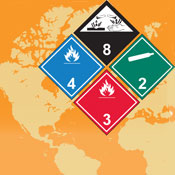
Emergency Response Guidebook
The U.S. Department of Transportation’s Pipeline and Hazardous Materials Safety Administration (PHMSA) has released a free, mobile app of its Emergency Response Guidebook 2016 (ERG). The ERG 2016 Mobile App was developed in partnership with the National Library of Medicine. The mobile ERG will make it easier for the nation’s emergency first responders to quickly locate the information they need to manage hazardous material transportation incidents. The updated 2016 version of the ERG includes new Initial Isolation and Protective Action Distance tables for large toxic gas spills and standard response procedures for gas and liquid pipeline incidents.
For additional information, go to:
http://phmsa.dot.gov/hazmat/library/erg
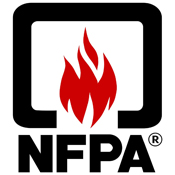
NFPA HazMat FLIC
NFPA’s HAZMAT FLIC app provides the on-scene incident commander with pertinent guidance materials for managing emergency responses for high hazard flammable train and liquid petroleum pipeline emergencies.
Features:
-
Two Fire Protection Research Foundation reports: (1) “Liquid Petroleum Pipeline Emergencies (LPPE) On-Scene Incident Commander Field Guide”; and (2) “High Hazard Flammable Trains (HHFT) On-Scene Incident Commander Field Guide”
Each guide provides the incident commander with tactical guidance and information for managing an emergency, including the application and use of risk-based response methodology.
-
A multi-tiered size-up checklist that includes steps for incident management, problem identification, hazard assessment/risk evaluation, PPE selection, logistics resource management, post-emergency response operations, and spill control and fire control operations
-
A collection of additional resources that includes links to incident reports, emergency numbers for rail lines, and links for additional train-specific and pipeline-specific information
For additional information, go to:
http://www.nfpa.org/hazmatic

WISER
First responders in general, and HAZMAT units in particular, must make many decisions quickly in handling hazardous-materials incidents. They need accurate information about the hazardous substances, the emergency resources available, and the surrounding environmental conditions to save lives and minimize the impact on the environment and physical property. The WISER application extracts content from TOXNET's Hazardous Substances Data Bank (HSDB), an authoritative, peer-reviewed information resource maintained by the National Library of Medicine, and places that information into the hands of those who need it most.
For additional information, go to:
https://wiser.nlm.nih.gov/
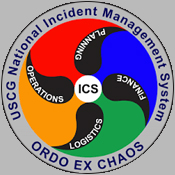
U.S. Coast Guard MIMH
The United States Coast Guard (USCG) Incident Management Handbook Mobile App (MIMH) is an electronic enhancement to the paper or electronic versions of the USCG Incident Management Handbook (IMH).
The USCG MIMH is an interactive job aid and quick reference resource for Coast Guard and other first responders for use during incident response operations. This application (App) has been designed for use in locations outside of cellular and internet coverage, thus it does not require connectivity to use the majority of its features. This App is not designed to replace the paper version USCG IMH.
For additional information, go to:
http://allhands.coastguard.dodlive.mil/2017/03/03/coast-guard-incident-management-handbook-now-an-app/
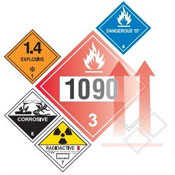
DOT Chart 16
PHMSA’s DOT Chart 16 displays the markings, labeling and placarding (in full-color) required by the Hazardous Materials Regulations, Title 49, Code of Federal Regulations.
Note that this application is intended for general guidance only and should not be used to determine compliance with 49 CFR, Parts 100-185.
For additional information, go to:
https://itunes.apple.com/us/app/dot-chart-16/id1245251292?mt=8
NS Railroad Emergency Response Planning Guide
The Norfolk Southern Emergency Response Planning Guide has been developed by Norfolk Southern Railway Company (Norfolk Southern) to assist local emergency response organizations in their efforts to plan for and respond to railway related incidents or emergencies. It is also designed to be utilized as a reference resource, and hand-out to supplement training programs presented by Norfolk Southern to the emergency response community.
Because this Guide is designed to augment the local response plan(s), it is purposely brief to cover only the key information that would be needed by planners and response organizations if an incident involving Norfolk Southern should occur. The Guide is subdivided into four main sections, addressing Prevention, Preparedness, Response, and Recognition & Identification. Appendices are included which contain other pertinent railroad information.
NS HazMat Traffic Request Form
Data on the common types of hazardous materials being transported through local communities are useful for local emergency planners in developing effective and realistic emergency response plans. To request information specific to your jurisdiction send an email request to NS at HMTraffic@nscorp.com. The request must include a written request on official department letterhead and the completed NS HazMat Traffic Form Request.
AAR Field Guide To Tank Cars
Field Guide to Tank Cars is intended to be used by emergency responders and others involved with railroad tank cars. It provides information on the types, safety systems, stenciling, and markings of tank cars utilized to transport regulated (hazardous materials/dangerous goods) and non-regulated commodities.
DownloadNS HM-1 Hazardous Materials Instruction for Rail
These rules govern all employees of Norfolk Southern Corporation (NS) and its railroad subsidiaries. One of the industry’s primary focuses is the safe transportation of hazardous materials. Compliance with the HM-1 HazMat Rules is required to handle hazmat shipments safely and efficiently in accordance with local, state, and federal regulations
DownloadDOT Emergency Response Guide
The Emergency Response Guidebook contains general emergency response information for hazardous materials. To use the guides (orange bordered pages), you must know either the DOT 4-digit identification number (yellow bordered pages), the proper shipping name (blue bordered pages), or the placard affixed to the car. The Emergency Response Guidebook also
contains initial isolation and protective action distances (green bordered pages) for some commodities.
This guidebook will assist responders in making initial decisions upon arriving at the scene of a dangerous goods incident. It should not be considered as a substitute for emergency response training, knowledge or sound judgment. The 2012 ERG does not address all possible circumstances that may be associated with a dangerous goods incident. It is primarily designed for use at a dangerous goods incident occurring on a highway or railroad.
Note: See attached PDF DownloadPHMSA - Commodity Preparedness and Incident Management Reference Sheet – Petroleum Crude Oil
Developed in conjunction with experts from the hazmat emergency response community, railroads and industry, this document provides emergency response organizations with a standard incident management framework based on pre-incident planning and preparedness principles and best practices. The reference sheet covers transportation safety and precautions, hazard assessment and risk, rail safety procedures, logistics, and the tools, equipment and resources necessary to prepare for and respond to crude oil rail transportation incidents.
DownloadPHMSA - Lessons Learned Report on Crude Oil by Rail Emergency Response
In May 2014, in conjunction with the Virginia Department of Fire Programs, PHMSA hosted a “Lessons Learned” Roundtable forum that consisted of a panel of fire chiefs and emergency management officials from some of the jurisdictions that experienced a crude oil or ethanol rail transportation incident. The purpose of this forum was to share firsthand knowledge about their experiences responding to and managing these significant rail incidents.
DownloadNFPA / Fire Protection Research Foundation – High Hazard Flammable Trains (HHFT) On-Scene Incident Commander Field Guide
This Guide (July 2016) provides tactical guidance and information for the On-Scene Incident Commander responsible for the management of bulk flammable liquid emergencies involving High Hazard Flammable Trains (HHFT), with a focus upon petroleum crude oil and ethanol. The application and use of a risk-based response (RBR) methodology for both planning and response purposes are critical success factors in the successful management of a HHFT incident.
DownloadChronology of DOT Actions on Safe Transportation of Flammable Liquids By Rail
PHMSA and FRA are committed to immediate and long-term solutions to prevent derailments involving flammable liquids and, in the event of a derailment, the consequences such an incident could have on individuals and communities. The PHMSA/FRA action plan includes unannounced spot inspections, sampling, and monitoring the movement and classification of crude oil within and out of oil fields throughout the U.S. In addition, we are engaging all stakeholders involved in shipping crude oil and other flammable liquids by rail to find common solutions to operational issues.
Visit phmsa.dot.govRailroad Emergency Numbers

Norfolk Southern
1 (800) 453-2530
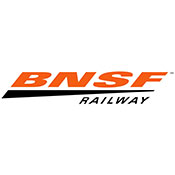
BNSF Railway
1 (800) 832-5452

Canadian National
1 (800) 465-9239

Canadian Pacific
1 (800) 716-9132

CSX
1 (800) 232-0144
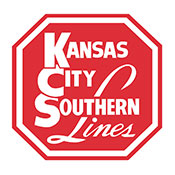
Kansas City Southern
1 (800) 892-6295

Union Pacific
1 (888) 877-7267
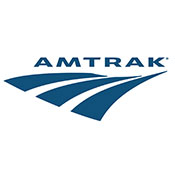
Amtrak
1 (800) 424-0217
US Contact Emergency Numbers
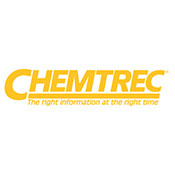
CHEMTREC
1-800-424-9300
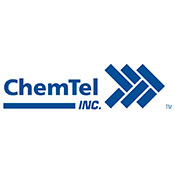
ChemTel Inc.
1-888-255-3924

Military Shipments
1-800-851-8061
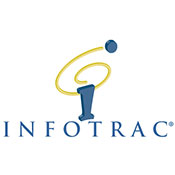
INFOTRAC
1-800-535-5053

3E Company
1-800-451-8346
Canadian Contact Emergency Numbers
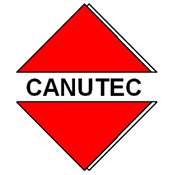
CANUTEC
1-613-996-6666
Mexican Contact Emergency Numbers

SETIQ
+52-55-5559-1588
